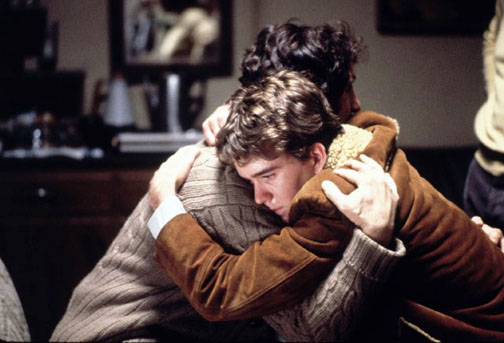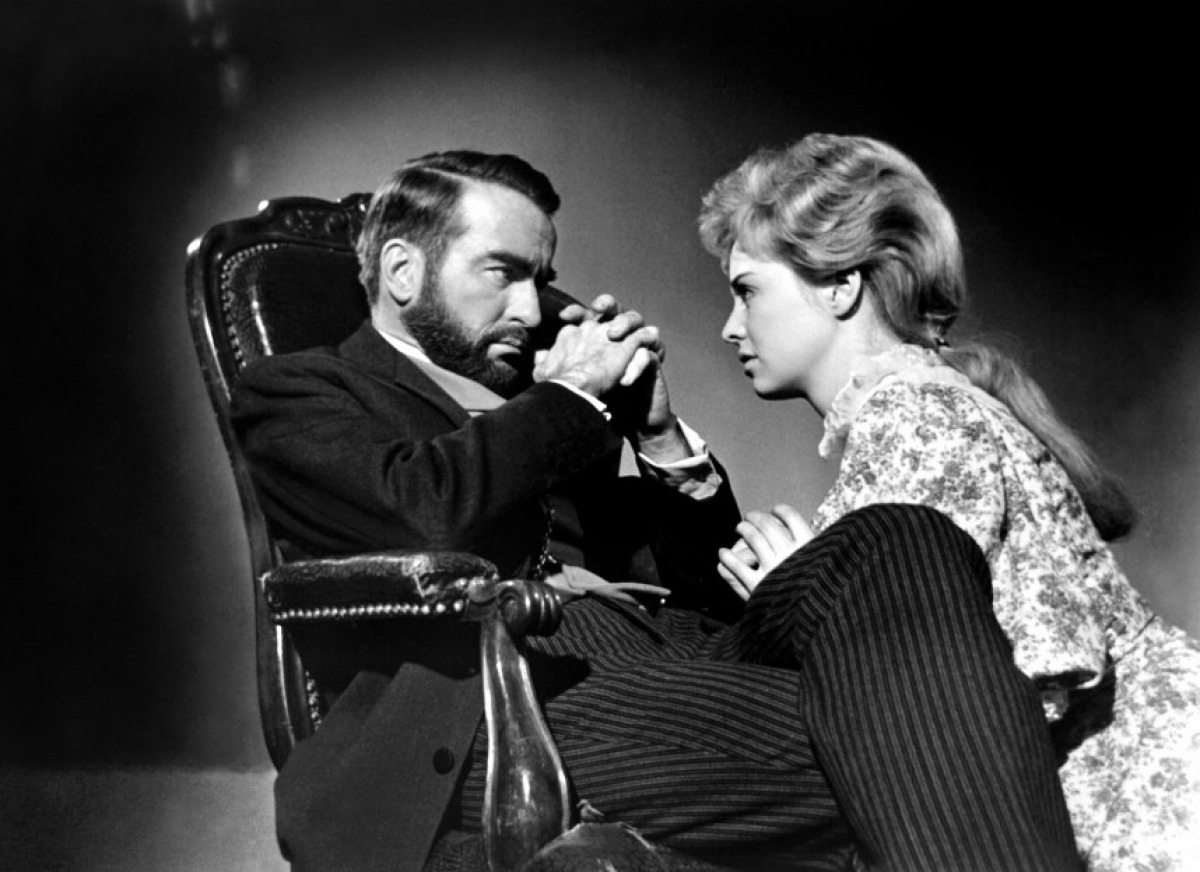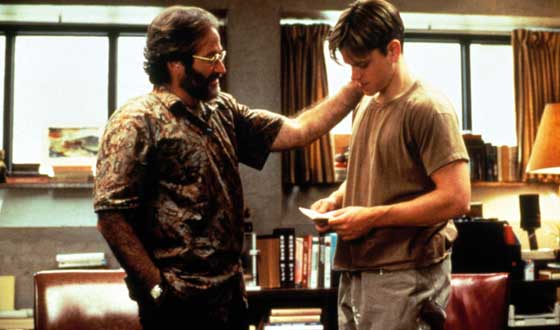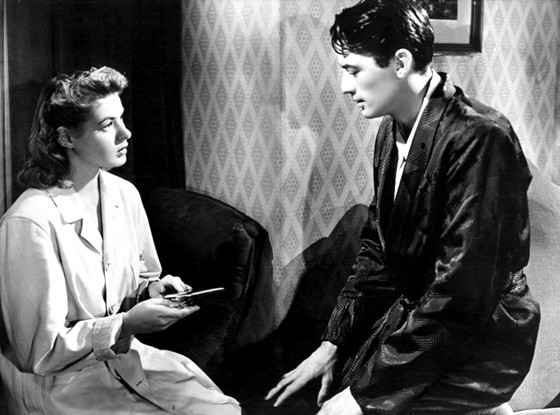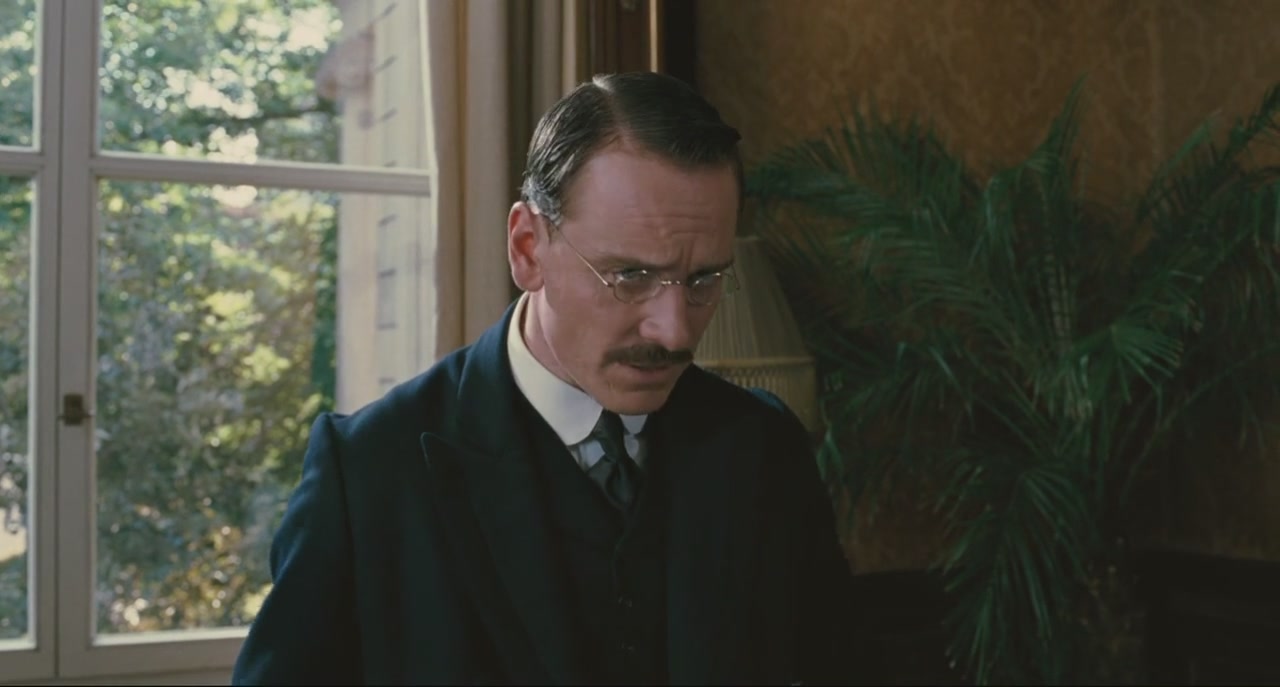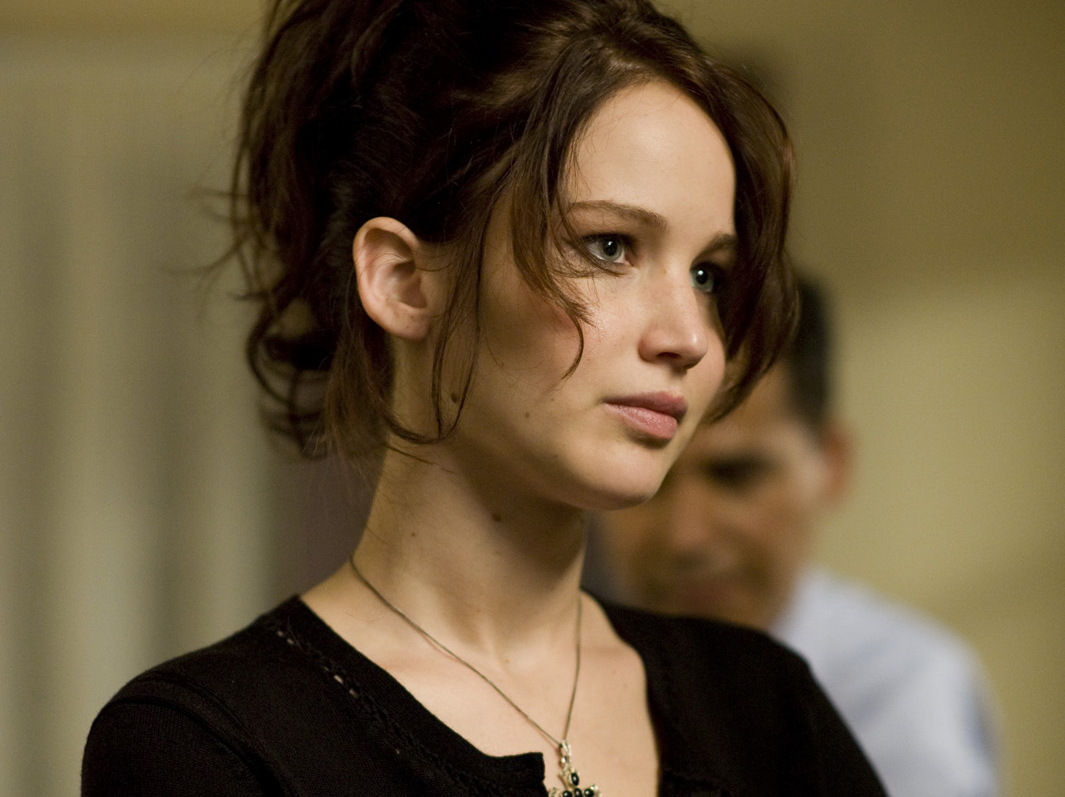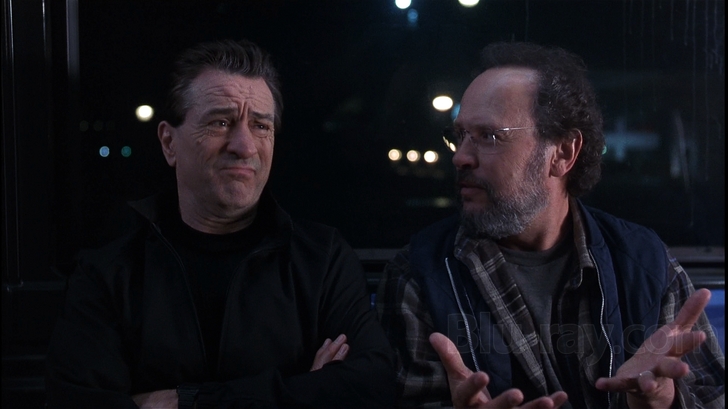8. Ordinary People (1980)
Conrad (Timothy Hutton) is a young man who is going through some emotional and psychological issues concerning his family and himself. His older brother died in a sailing accident and that traumatized him so much he attempted suicide, ending up in a psychiatric hospital, where he stayed for four months.
The films begins with Conrad returning home and having to deal with his parent’s troubles in addition to his own. His mother (Mary Tyler Moore) appears to be the best wife and homemaker on the outside, but on the inside cannot give sufficient love which Conrad needs. The loss of her older son and shook her balance and soured her love for the other members of the family.
Confronted by those issues, Conrad consults a psychiatrist, Dr. Berger, who he believes can help him “be more in control of things”. As the plot unfolds, it is clear that the young man turned to Dr. Berger due to a deeper and more complex issue.
Conrad seems to have created a guilt complex concerning his brother’s death which prevents him from leading a normal life. His therapy sessions focus on his self-image and negative thinking and actions which reflects on his families and social relationships.
Although the movie creates a complex web of conflicts and highlights the roles of the father, mother and son individually. The major plot line centers around the conflicts of Conrad’s conscience and the process he undergoes to overcome trauma and the uncomfortable situation surrounding himself and his parents.
The film follows that transformation. The transformation reaches its climax when, in session with Dr. Berger, Conrad allows himself to recover his memory of the fatal incident, performing what in psychoanalysis it is called the discharge of a accumulated libido or tension, and therefore reliving indeed the “tension” that was avoided by a process of repression, generating anguish.
9. Freud: The Secret Passion (1962)
This John Huston bio-picture supposedly depicts Sigmund Freud’s (Montgomery Clift) journey developing a theory about the psyche and his attempts to applying this theory in the treatments of hysteria patients. The director chooses to present the hypnotic method of treatment of hysteria created by Jean-Martin Charcot (Fernand Ledoux), which is presented frequently throughout the film, giving it a role of great importance for the development of Freud’s theories.
This perspective adopted by Huston shows the character of Freud’s life and personality, positing questions opened by Jean-Paul Sartre’s original script. Sartre explores the topic of Freud’s own sexuality and deals with his problems and resulting migraines.
Huston tries to present to the audience the struggles Freud encountered in proposing his arguments of repression, the subconscious, child sexuality and the connection between hysteria symptoms and the component repressing the part of the mind which one can not access without an analysis.
The film focuses on the relationship Freud established with his mentors and father figures, including Dr. Theodore Meynert (Eric Portman), the anatomist who associated brain damage with the possibility of developing psychiatric illness, Dr. Jean-Martin Charcot, a neurologist of great reputation, and Josef Breuer (Larry Parks), a physician recognized for developing the talking cure in the treatment of Anna O, depicted in the film as Cecily Koertner (Susannah York).
The importance of this picture is the depiction of the process of acquirement of repertoire in the configuration of the school of thought of psychoanalysis. That configuration was possible because of the collaboration between Freud and his counselors and the development of the hypnotic method as the breakthrough which would later lead to the talking cure and the modern aspect of the psychoanalytic method and its perspective.
10. Good Will Hunting (1997)
Will Hunting (Matt Damon) and Sean McGuire (Robin Williams) have a lot in common. They are both intelligent men who went through difficult times and loss, which prevented them from achieving their dreams. Their paths cross when Will, working as a janitor at MIT, solves the math problems Prof. Gerald Lambeau (Stellan Skarsgård) presented his students as an extra-curricular challenge.
The professor, discovering Will’s incredible intelligence, begins a process of rehabilitating Will from his savage state and towards the start of a potentially great career.
Will does not want to go through therapy. Even when the conversations he holds with Sean creates the possibility and space for him to express himself, he retreats and becomes aggressive towards the counselor. It is, as later observed by Sean himself, a defense mechanism, and all he wants to do is make Will feel like he deserves to be loved and that he holds the capacity to decide what is best for himself and actually change.
Although Will is surrounded by people who care for him and only wish him happiness, he does not let himself get too involved, and therefore get hurt. That is what Sean wants most help him with in working in the sessions. This involves not only the counseling for the career Prof. Lambeau wishes for him. Sean wants to establish a strong connection with Will in order to facilitate the steadiness and control missing in Will’s life.
The therapy begins as a guidance of Will’s professional potential and a psychological foundation for his new life. However, the relationship established in those sessions surpasses ordinary counseling and initiates a process of interpersonal exchange and growth.
11. Spellbound (1945)
The field of dream interpretation is a very mysterious and dubious one. The scholars who study in this field have established different theories and perspectives about how to approach dreams and the possibility of attributing consistent interpretations.
Spellbound takes the psychoanalytical perspective concerning dreams and presents the representation of the unconsciousness, the struggle to access the repressed conscious and the symptoms which emerge from this action.
Spellbound concerns Dr. Constance Petersen (Ingrid Bergman), a psychiatrist who encounters Dr. Anthony Edwardes, her new boss at the Green Manors mental asylum. Dr. Edwardes behaves strangely and Dr. Petersen, becoming involved with him, develops a romantic interest and begins to suspect something is amiss.
Alerted by the strange phobia concerning stripes she observes in his behavior, which fuels her growing suspicions, she discovers that Dr. Edwards is an imposter. After a confrontation, the deceiver confesses to the murder of the real doctor and asks for her support. He suffers from a severe amnesia and cannot remember who he is or whether he, in fact, committed the crime. Dr. Petersen believes in his innocence and that he is experiencing guilt complex.
Through the method of dream interpretation and with the help of Petersen’s mentor, Dr. Alexander Brulov (Michael Chekhov), she uncovers his real identity as John Ballantine.
The psychoanalytical aspects presented in Spellbound portray the heritage/legacy of the psychoanalysis created by Freud and Breuer five decades earlier.
The effort to accesses memories transposed to the most profound and unknown part of the consciousness, through free association (hypnosis) and dream interpretations, compose the arsenal an analyst uses in order to unlock the resistance of the Id and, therefore, reach the root of whatever was causing the symptoms.
12. Antichrist (2009)
Lars von Trier directs an experimental horror film which transcends the audience’s expectations and pre-established conceptions. It is one of the few films to illustrate depression as a severe mental disorder and to highlight the importance of its psychological treatment in order to assist personal development.
Although the film does not specifically focuses on the disorder and does not show the benefits of treatment, it is a good example of exposure therapy, according to behaviorism and cognitive psychology, and of the possibilities of an intimate and unsettled relationship between the parts of the therapy.
The characters, named He (Willem Dafoe) and She (Charlotte Gainsbourg), experience the loss of their only son, Nic (Storm Acheche Sahlstrøm), who suffered a fatal accident when both were having sex.
Due to his sudden death, She goes through a mental breakdown due to guilt and sorrow and has to be hospitalized in a psychiatric hospital which not only prolongs her pain, but also increases her suffering, turning it into a mess of emotions and removing her ability to express herself.
After some time, He decides to take her home and apply treatment himself. He first attempts to cleanse the medicines from her system and then tries to help her accept the pain and guilt, so she can begin to forgive herself.
The exposure treatment begins when He decides to make her confront her fears, and they agree to spend the summer at “Eden”, their isolated cabin in the woods. However, the mistake made by the therapeutic husband is to share his weaknesses and subjectivity with his patient and they engage themselves constantly in sexual and aggressive behavior.
Permeated with sexual and sadomasochistic images, the narrative does not improve its characters’ fears and temper, only intensifies them into a circumstance in which they are falling into madness and helplessness.
13. A Dangerous Method (2011)
This David Cronenberg production concerning the relationship between Sigmund Freud (Viggo Mortensen) and Carl Jung (Michael Fassbender) and their eventual rupture proceeds in a devious and uncertain direction.
It starts as a drama concerning the psychoanalytical treatment Jung applies to his patient, Sabina (Keira Knightley), and the later interest she develops in that field of study. This opening presents the Contents which compose psychoanalytical diagnosis,, including hysteria symptoms, sexual abuse, the repression of that abuse and the desire for one of the parents.
The innovative idea depicted focuses on the development of Sabina, from a patient to becoming a psychoanalyst herself. Most films concerning hysteria and psychoanalysis define the patients, as someone who, if they can be cured, will be left in a neurotic state.
Nevertheless, “A Dangerous Method” concerns an academic triangle (not love triangle as suggested by the poster and trailer), suggesting that the profession could be pursued by anyone that had been previously analyzed. Tough the romantic affair Jung and Sabina share does not necessarily contribute to advancing the narrative, it helps to establish the triangle of Sabina-Jung- Freud, centering on the school of psychoanalysis.
The director gives insight into the association and later estrangement between Freud and Jung. He also presents the way the process of applying Freudian theories transformed Jung, as observed in the last minutes of film when Sabina talks to Jung about his perceptions.
It is possible to say that the introduction of psychoanalysis into the lives of Jung and Sabina (and even Jung’s wife) represents the eventual reception of the academy and the transformation of the conception of man and society.
This exposure to psychoanalytical ideas produced a great revolution centering on the questions of mind and body and prepared the ground for the development of other schools of psychology, even the analytical, founded by Jung, after his disagreement with Freud and was based on his pragmatic understanding of the processes of the mind.
14. Silver Linings Playbook (2012)
The manifestation of disorders in today’s society is largely one of perception. It is hard to find someone who has not developed some form of mental illness, especially depression and anxiety. However, sometimes the theraphy cannot be successful and mental health can be achieved only by one self determination and actions.
Silver Linings presents a young disturbed man, diagnosed with personality and maniac disorder and incapable of controlling his anger, and a young woman, incapable of handling her sexual impulses, a reflex defense mechanism concerning her mourning.
Pat (Bradley Cooper) spent eight months in a mental health institution after beating up his wife’s lover. While he is going through the process of reestablishing his life, he meets Tiffany (Jennifer Lawrence), a recovering sex addict who is experiencing widowhood.
The film concerns accepting one’s nature and learning to improve and be whoever one desires to be. The film employs Gestalt-therapy and its constant search for awareness (the perception of ongoing connections and the meanings it can compose) and the prospects one can choose to follow based on this awareness.
Although the director does not introduce a therapist who could lead the process of awareness, Pat and Tiffany together explore the paths they can pursue in order to achieve perception.
The romantic tale of Pat and Tiffany’s self-discoveries reveals that even though one might not desire any professional help out of concern for pride or shame, one can conciliate with oneself. In order to accomplish this there must be a connection with another character, which first requires accept in order to later be modify one’s behavior.
15. Analyze This (1999)
This mobster comedy centers on a Mafia boss who is experiencing stress, anxiety and panic attacks. After one of his anxiety episodes, Paul Vitti (Robert DeNiro) seeks help and ends up turning the life of Dr. Ben Sobel (Billy Crystal) upside down. Paul represents the type of proud, distant, impersonal and hostile man who does not express his feelings often and when they emerge, gets very anxious.
Dr. Sobel, however, is the typical analyst who throws Freudian concepts at patients, seldom making real progress with them. When Paul appears in his life, everything changes and he realizes he has to adapt his analysis style to try to make Paul understand that he must face his problems in order to understand as well as to interpret his actions. This progress also involves Sobel, for he needs to reinvent himself as an analyst to develop professionally.
Although Analyze This is a Hollywood comedy, it brings to commercial films the importance of personal growth and therapy, if not not specifically psychoanalysis. Moreover, it depicts under lighthearted conditions the challenging path the course of therapy determines in the transformation of one’s behavior and thought.
Author Bio: Viviane Papis is a psychology student. She developed a very special relationship with cinema and storytelling in the process of growing up. Although she tried following the filmmaking career, she realized her passion was writing and scriptwriting.
